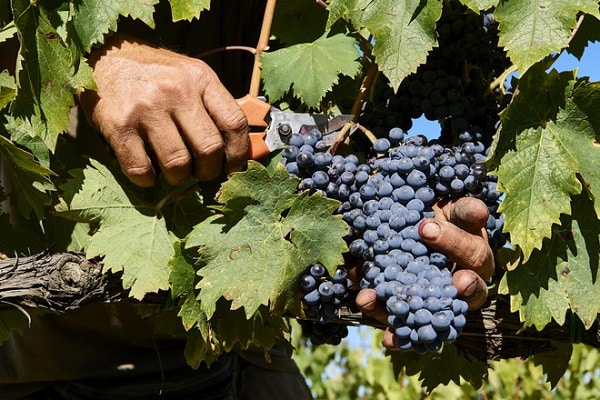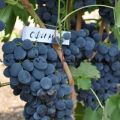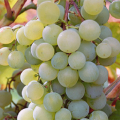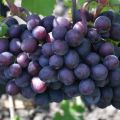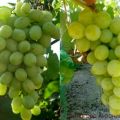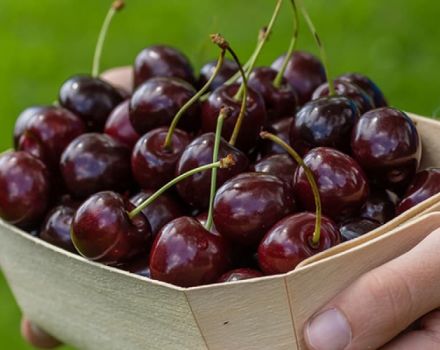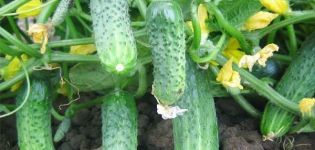Description and characteristics of the strashensky grape variety, planting and cultivation
Today, there are quite a few grape varieties on the horticultural market, so it is often difficult to make a choice. The main difference lies in the shape and color of the berries, the rates of fruiting, the ability to withstand difficult growing conditions. If you want to try to grow such a culture on your site, you should pay attention to the Strashensky grape variety, having previously learned about its features and requirements for growing.
Breeding history of the variety
The Straseni variety, often called the Consul, appeared in the 80s of the last century and was the result of a selection of scientists from Moldova. The culture belongs to the category of complex interspecies, since several grape varieties were used in its creation.
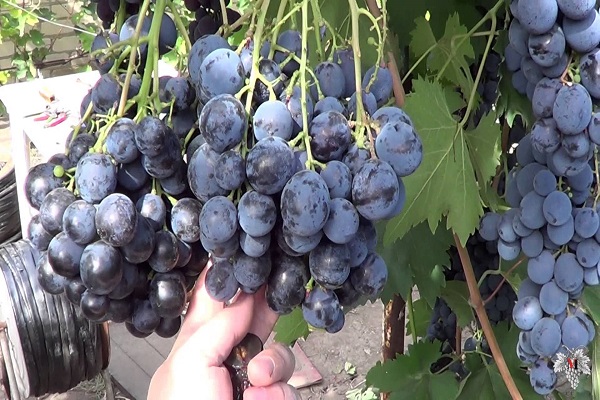
Growing area
Initially, the variety was bred for the growing conditions of the Republic of Moldova, where it showed good results. Today, horticultural crops are successfully grown in Russia, Armenia, Italy and France. The ability of the variety to tolerate temperatures down to -20 C makes it possible to form plantings in regions with difficult climatic conditions, but the plant does not have good drought resistance.
External parameters and characteristics of grapes
The description classifies the hybrid table variety Strashensky as a high-yielding species with an average ripening period. The bushes are powerful, with large leaf blades, the upper surface of which is smooth, and the lower one is covered with bristles. The advantage of the variety is its resistance to frost and easy rooting of cuttings and seedlings.
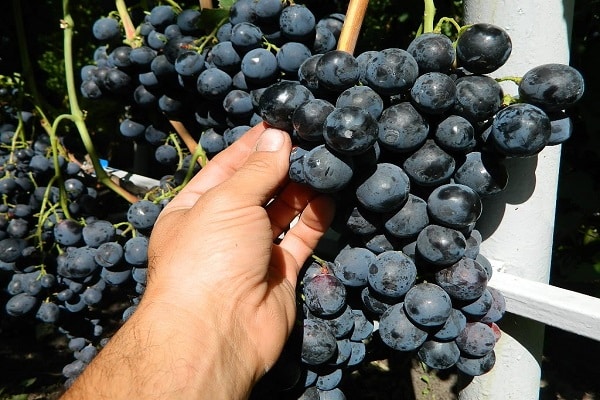
At the time of flowering, bisexual flowers are formed, so the plant does not need additional pollination. Large berries are rounded, dark purple or almost black in color. The weight of one berry varies from 10 to 15 g, some grapes can reach 22 g.
Harvest quantity and taste of fruits
The dark-colored berries are formed by bunches of grapes weighing 700 g; their weight is recorded at 2.2 kg. With proper care, the plant begins to give off its first fruits already in the 1-2nd year. Grapes Straseni when grown on an industrial scale allows you to get up to 250 centners per hectare, on a personal plot one bush gives up to 30 kg of grapes.
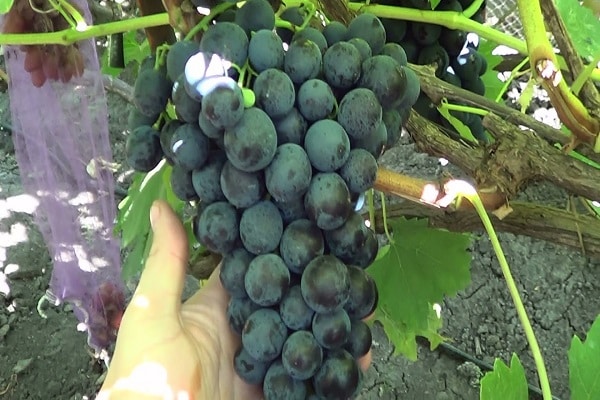
Grapes have a thin skin and juicy flesh. The tasting qualities of the fruits were rated 8, which indicates a high taste. The sugar content reaches 19%.The fruits do not differ in their ability to long-term storage and cannot tolerate long-term transportation.
Planting and care conditions
Of no small importance is the quality of the purchased seedling, therefore, it is required to acquire grapes only in specialized nurseries and it is better in the region in which the personal plot is located. The plant should be free of signs of damage and putrefactive defects.
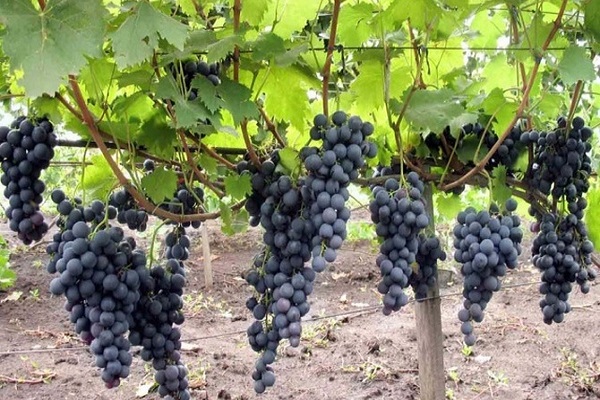
Compliance with the necessary planting rules and providing the shoots with the conditions necessary for growth are the key to obtaining a decent harvest. Despite the fact that the variety is frost-resistant and able to withstand low temperatures in regions with cold climates, it is recommended to put it under cover during the winter period.
For this, the vines are removed from the retaining supports and placed under a protective structure until the onset of spring. They do such work before the onset of frost. When forming a protective structure, it is important to take into account the fact that lack of air, humidity and excessive warming will lead to the effect of "overheating" of the plant, which can negatively affect its condition in spring or lead to death.
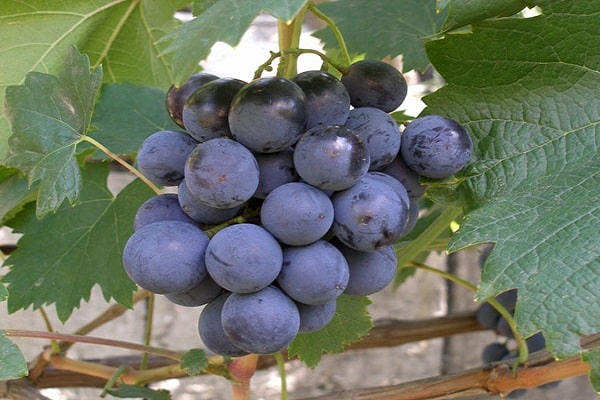
Pit depth and optimal placement of seedlings
Plantings are formed in spring or autumn, it is recommended to place them in even rows. A distance of 2.5 m is required between shoots, and 3 m between rows.Adequate planting depth is 80 cm.
Before planting, it is required to spread the root processes well, cut them and, if desired, soak in a growth stimulator. At the time of planting, it is required to achieve an even distribution of the roots inside the planting hole, then cover it with a layer of fertile soil and perform thorough watering.
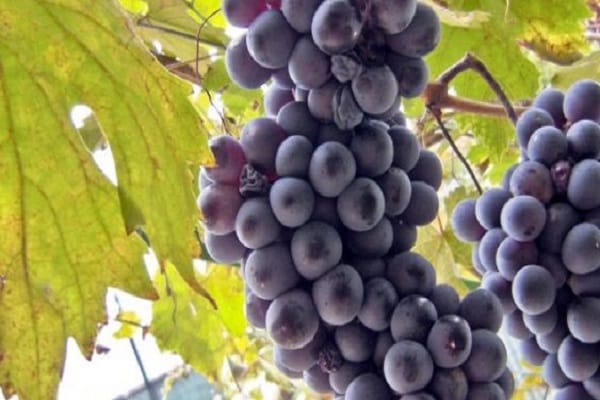
The soil
Strashensky grapes are picky about the planting site and sufficient lighting. It requires fertile soil and a lot of light, therefore, sunny southern areas, protected from gusts of wind, are chosen for placement. The plant does not tolerate stagnant water, therefore, planting in a place where groundwater is close to ground should be abandoned.
For light and sandy soils, it is not necessary to provide a drainage layer, since they are highly moisture and oxygen permeable. Dense types of soil require intervention and adjustment of their qualities. Drainage made of gravel, chipped brick or coarse sand will help to improve the quality of soil permeability and avoid stagnant water.
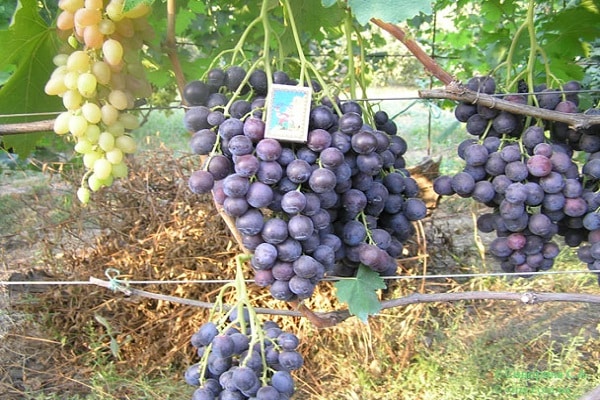
Watering
The Strashensky variety belongs to the moisture-loving, therefore, it needs to ensure regular abundant watering. After planting seedlings, the soil is moistened 1 time every 7 days, after harvesting, the frequency is reduced to 1 time per month. With excessive humidity, the problem of cracking of the grapes can be observed.
Fertilizer
The nutritional value and fertility of the soil directly affect the fruiting rates of grapes. To improve the quality of the soil, fertilizers are applied. The first work is carried out in the fall, adding humus or compost when digging. When planning the planting of seedlings in the fall, the fertilizer complex is applied to the pits in 3 weeks. When planting in the spring, 1 bucket of organic fertilizer and 1 g of superphosphate are added to one hole.
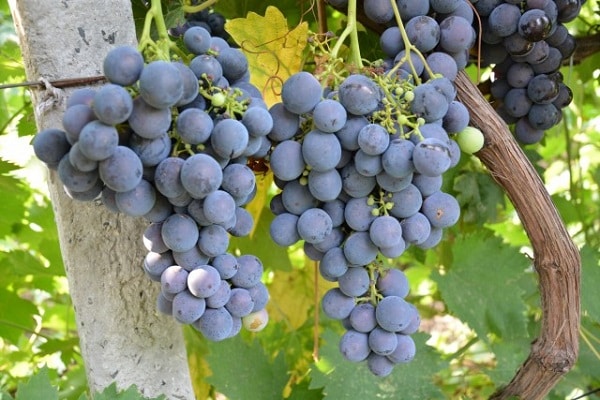
Pruning and shaping the vine
The grapes of this variety are characterized by a long flowering period, which often negatively affects the ripening period of the fruit. To prevent such a problem, the removal of the first grape cluster on each of the bushes is performed.
Due to the high-yielding variety, the shoots tend to suffer from congestion.
To maintain the proper health of the plant, it is required to cut off barren flowers and unformed eyes.Optimal for grapes is the presence of no more than 18 eyes on one shoot. The grapes are pruned in a standard way. From 4 to 6 eyes are left on the shoot, given that the largest clusters are formed at the second level.
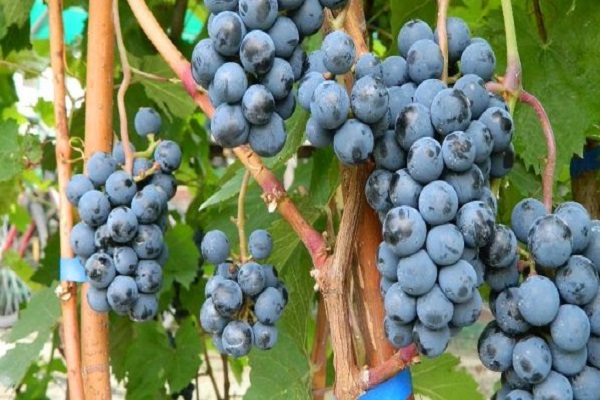
Pollination
The hybrid forms flowers of both sexes, therefore, the presence of female and male inflorescences allows only this variety to be planted on the site. For fruiting, Strashensky does not require the planting of other grape crops.
Flowering and fruiting period
Flowering and ripening of Strashensky grapes is delayed in time, due to the large size of the bunches. A situation is often observed when the upper ones have already stopped blooming, and 1/3 of the lower ones are just starting the process. A similar situation is observed during the period of fruit ripening.

The period of bearing fruit, depending on the region of cultivation, ranges from 130 to 145 days. Their color changes gradually. The first signs of color acquisition are observed already in mid-July, which becomes more saturated by the end of the month. Ripening lasts for 2 weeks and the crop can be harvested from the second week of August. The exact timing may vary slightly from region and climatic growing conditions.
Treatment against pests and diseases
Strashensky belongs to hybrids, which allowed him to acquire only the best qualities from his parents. The variety has excellent immunity to various types of grape diseases, is resistant to rot and mildew. Resistance to the first type of disease is estimated as 3 points, resistance to the second - 2 points. Most often it is infected with gray rot and ashtray, but compliance with generally accepted growing rules reduces the risk of their appearance at times. The main ones include:
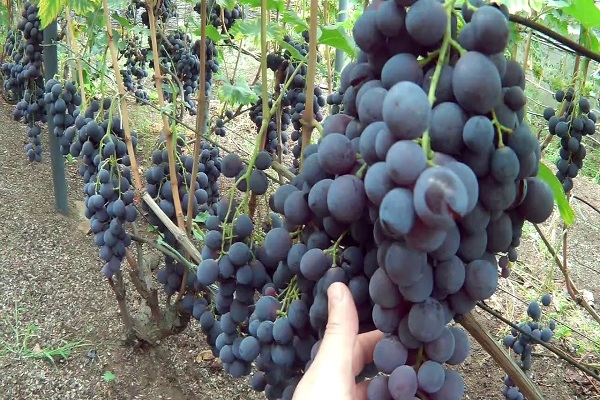
- periodically check the plant for diseases;
- carry out timely feeding;
- treat planting with drugs for prevention;
- harvest in time, prevent grapes from rotting;
- avoid damage to berries by wasps and birds, if necessary, cover the bunches.
For the prevention of diseases, grape plantings are sprayed with a solution of Bordeaux liquid with an active substance concentration of 1-3%.
